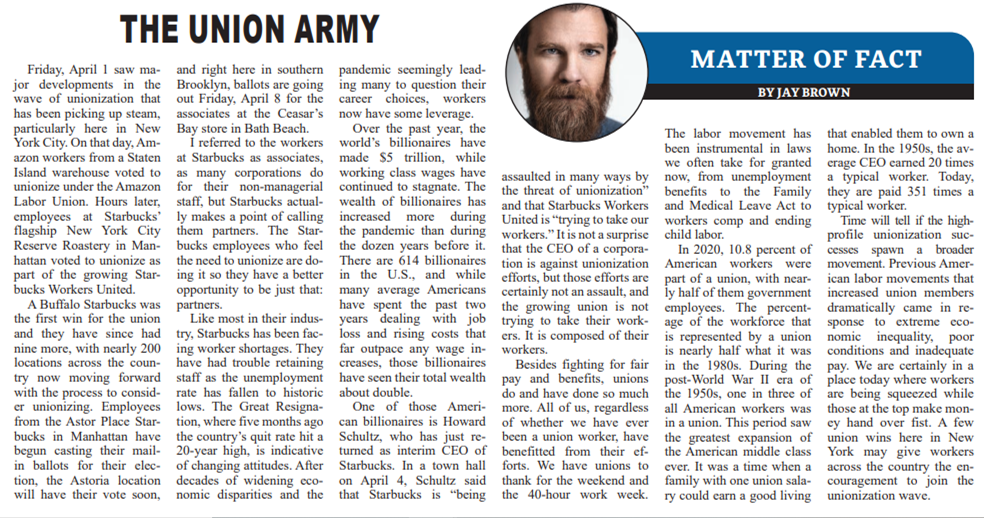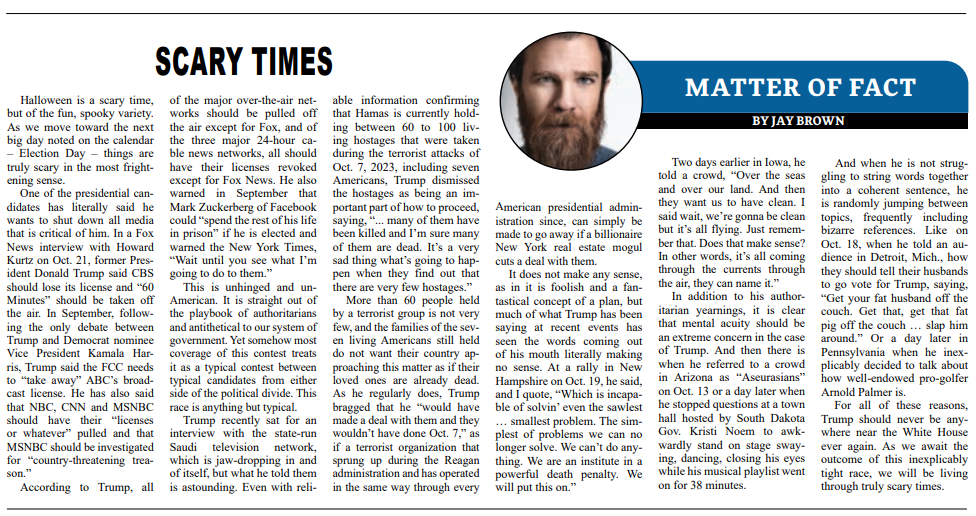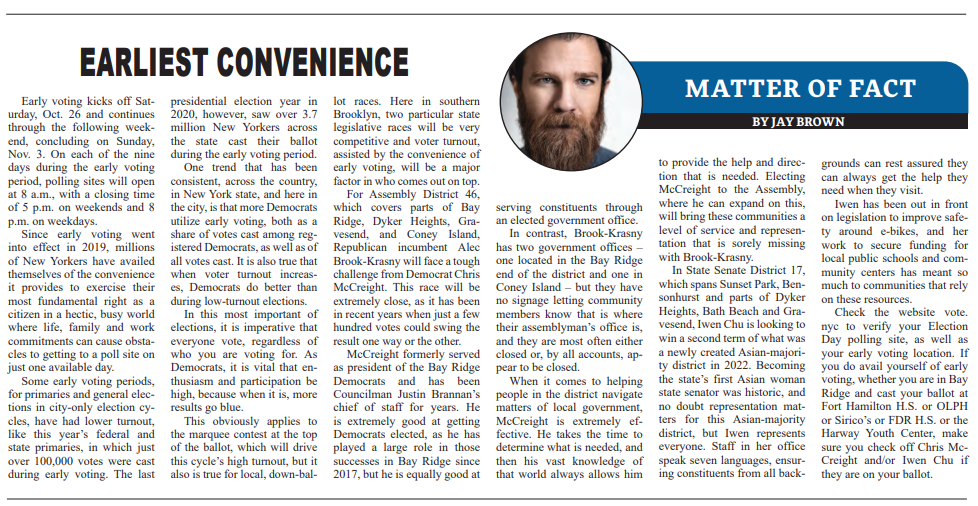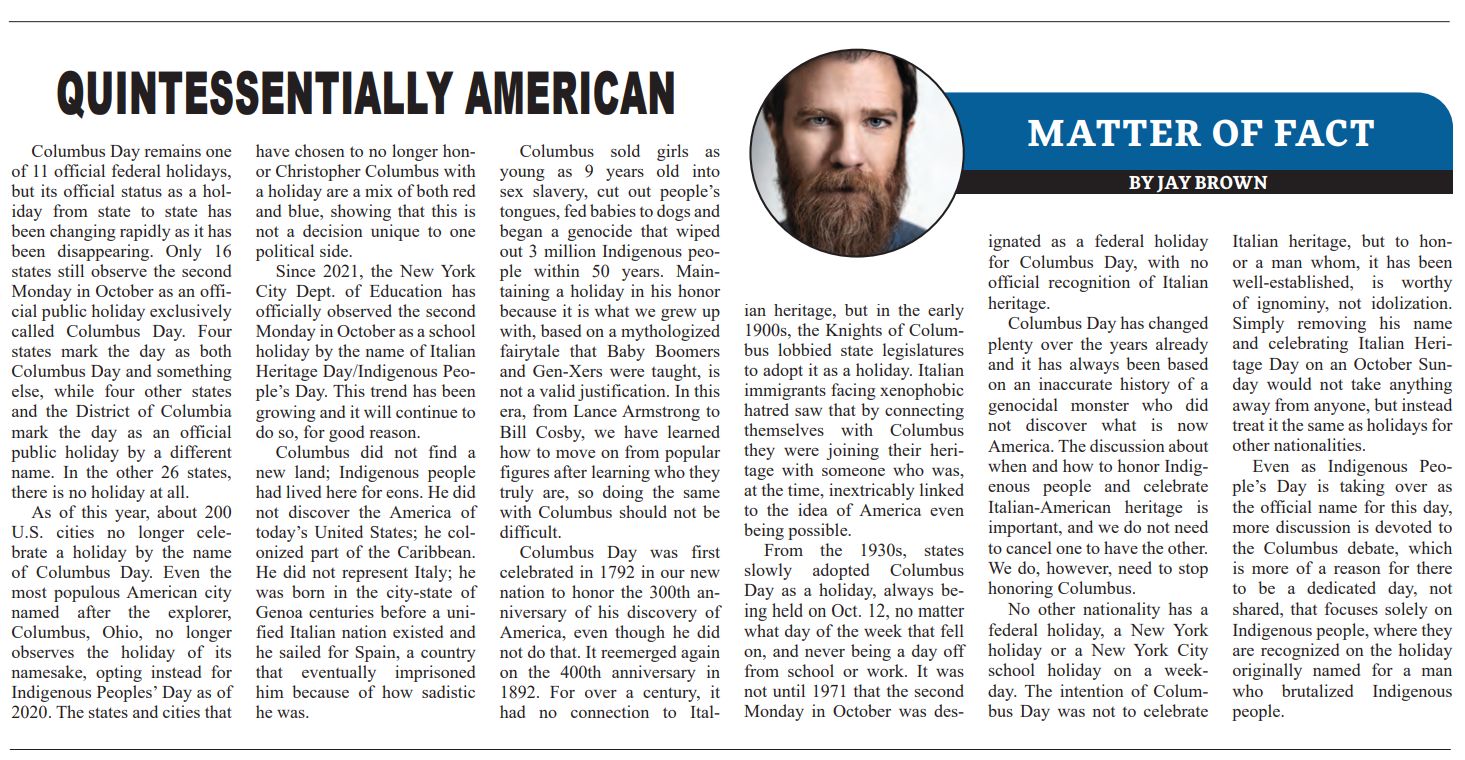This column, from the weekly opinion piece MATTER OF FACT, first appeared on BrooklynReporter.com, the Home Reporter and Spectator dated April 8, 2022
Friday, April 1 saw major developments in the wave of unionization that has been picking up steam, particularly here in New York City. On that day, Amazon workers from a Staten Island warehouse voted to unionize under the Amazon Labor Union. Hours later, employees at Starbucks’s flagship New York City Reserve Roastery in Manhattan voted to unionize as part of the growing Starbucks Workers United.
A Buffalo Starbucks was the first win for the union and they have since had nine more, with nearly 200 locations across the country now moving forward with the process to consider unionizing. Employees from the Astor Place Starbucks in Manhattan have begun casting their mail-in ballots for their election, the Astoria location will have their vote soon, and right here in Southern Brooklyn, ballots are going out Friday, April 8 for the associates at the Ceasar’s Bay store in Bath Beach.
I referred to the workers at Starbucks as associates, as many corporations do for their non-managerial staff, but Starbucks actually makes a point of calling them partners. The Starbucks employees who feel the need to unionize are doing it so they have a better opportunity to be just that: partners.
Like most in their industry, Starbucks has been facing worker shortages. They have had trouble retaining staff as the unemployment rate has fallen to historic lows. The Great Resignation, where five months ago the country’s quit rate hit a twenty-year high, is indicative of changing attitudes. After decades of widening economic disparities and the pandemic seemingly leading many to question their career choices, workers now have some leverage.
Over the past year, the world’s billionaires have made $5 trillion, while working class wages have continued to stagnate. The wealth of billionaire’s has increased more during the pandemic than during the dozen years before it. There are 614 billionaires in the United States and while many average Americans have spent the past two years dealing with job loss and rising costs that far outpace any wage increases, those billionaires have seen their total wealth about double.
“In 2020, 10.8 percent of American workers were part of a union, with nearly half of those, government employees. The percentage of the workforce that is represented by a union is nearly half what it was in the 1980s. During the post-World War 2 era of the 1950s, one in three of all American workers was in a union.”
Citation….
One of those American billionaires is Howard Schultz, who has just returned as interim CEO of Starbucks. In a town hall on April 4, Schultz said that Starbucks is “being assaulted in many ways by the threat of unionization” and that Starbucks Workers United is “trying to take our workers.” It is not a surprise that the CEO of a corporation is against unionization efforts, but those efforts are certainly not an assault, and the growing union is not trying to take their workers. It is comprised of their workers.
Besides fighting for fair pay and benefits, unions do and have done so much more. All of us, regardless of whether we have ever been a union worker, have benefitted from their efforts. We have unions to thank for the weekend and the 40-hour work week. The labor movement has been instrumental in laws we often take for granted now, from unemployment benefits to the Family and Medical Leave Act to workers comp and ending child labor.
In 2020, 10.8 percent of American workers were part of a union, with nearly half of those, government employees. The percentage of the workforce that is represented by a union is nearly half what it was in the 1980s. During the post-World War 2 era of the 1950s, one in three of all American workers was in a union. This period saw the greatest expansion of the American middle class ever. It was a time when a family with one union salary could earn a good living that enabled them to own a home. In the 1950s, the average CEO earned 20 times a typical worker. Today, they are paid 351 times a typical worker.
Time will tell if the high-profile unionization successes spawn a broader movement. Previous American labor movements that increased union members dramatically, came in response to extreme economic inequality, poor conditions, and inadequate pay. We are certainly in a place today where workers are being squeezed while those at the top make money hand over fist. A few union wins here in New York may give workers across the country the encouragement to join the unionization wave.




